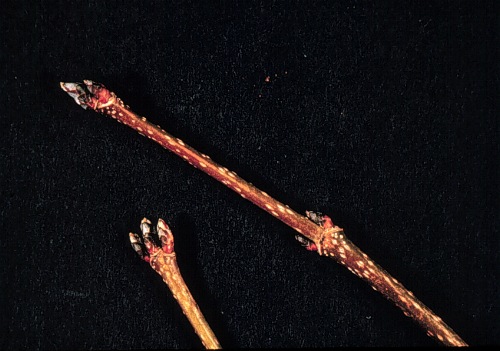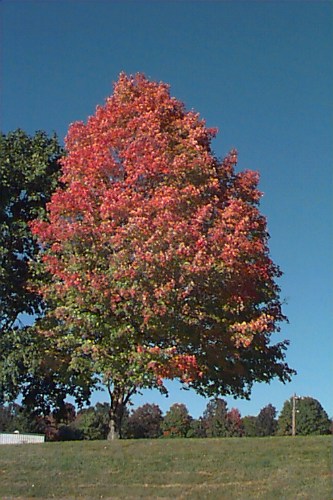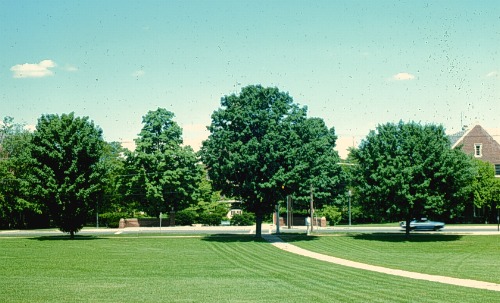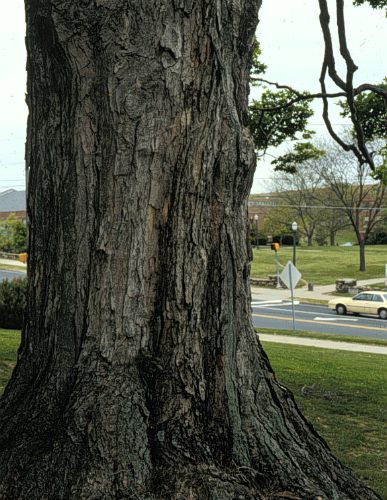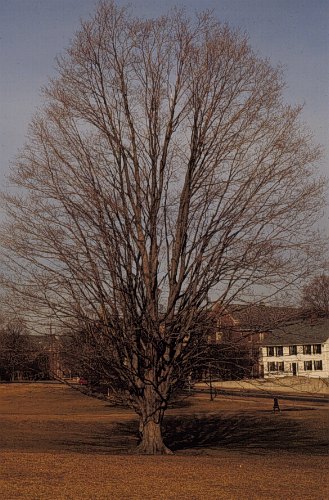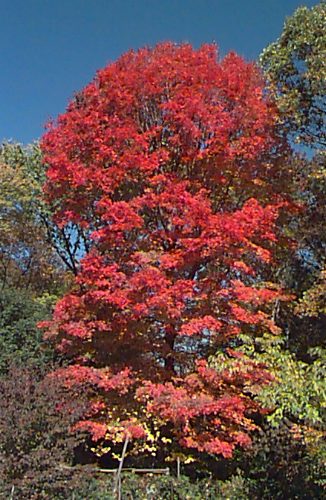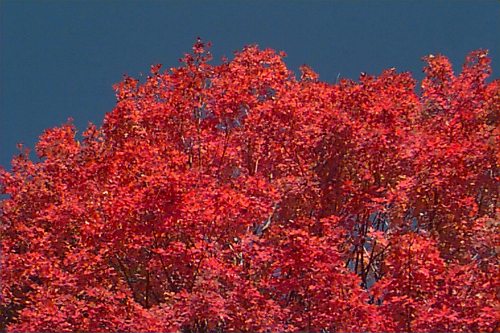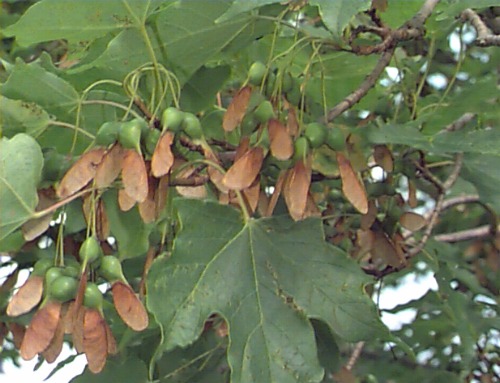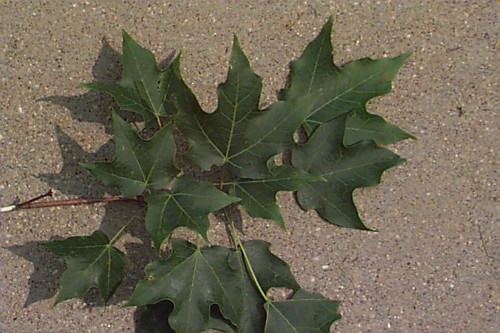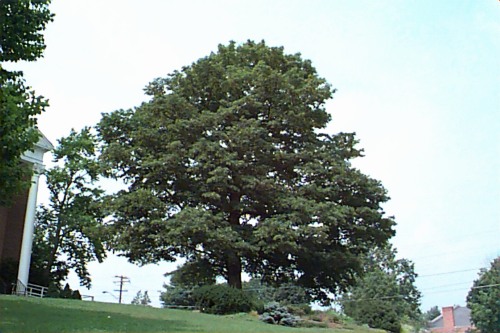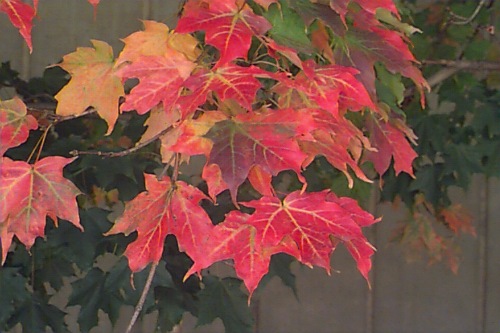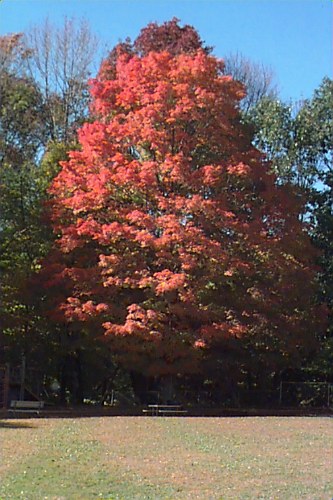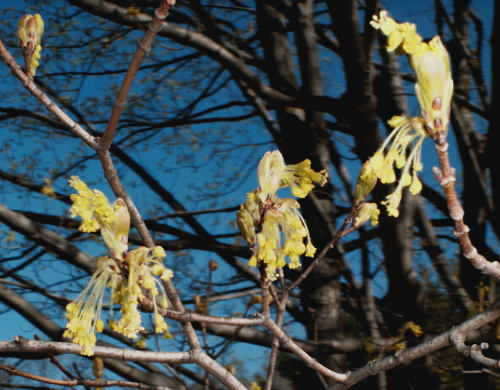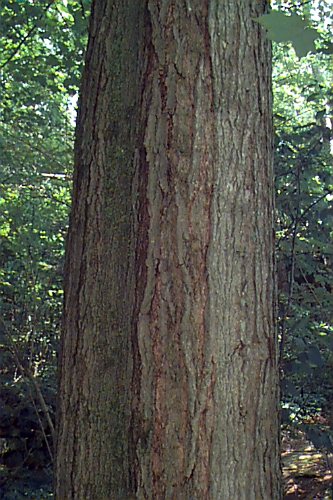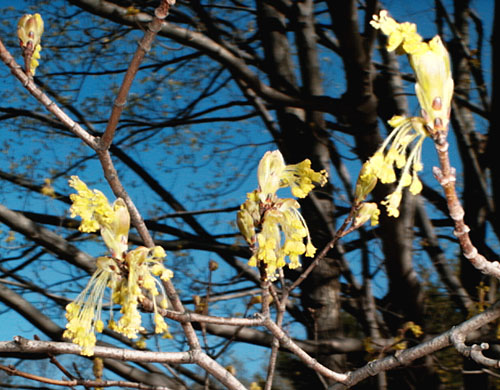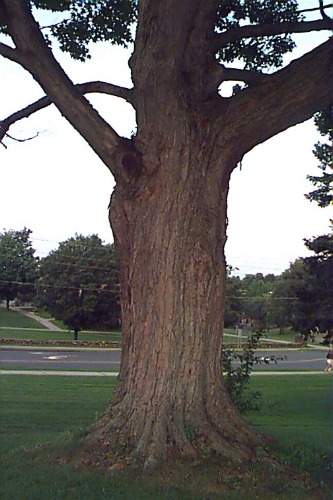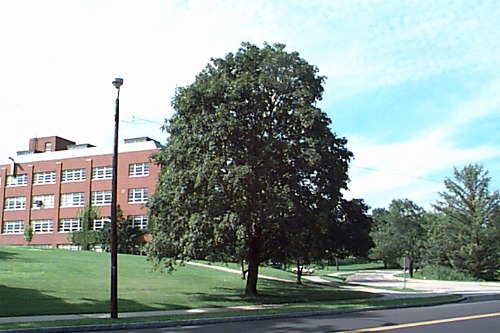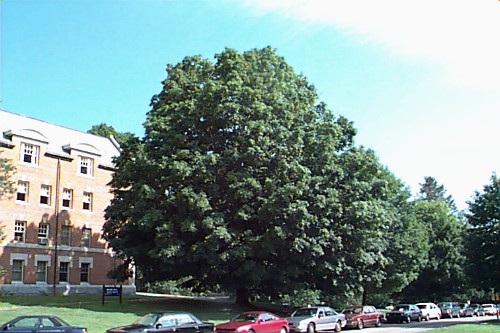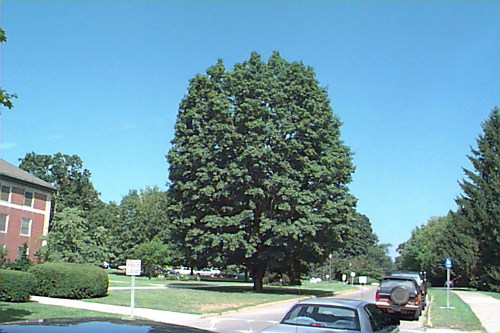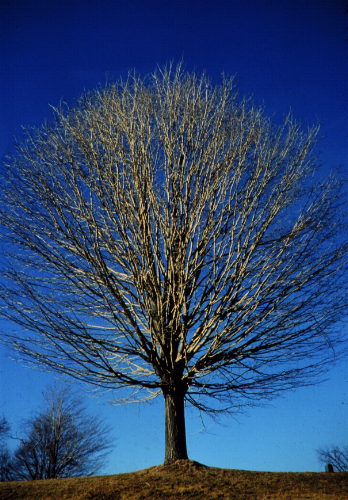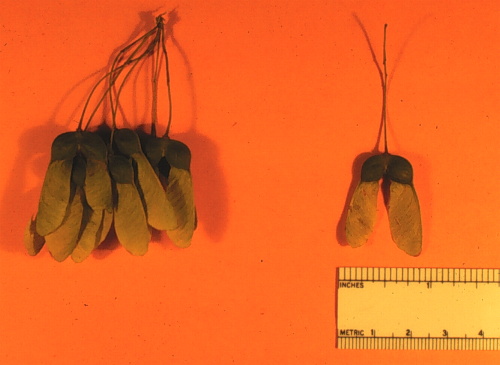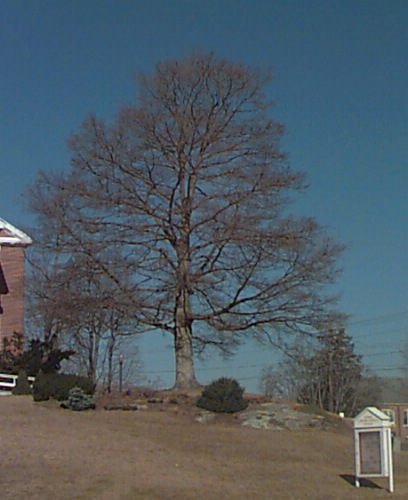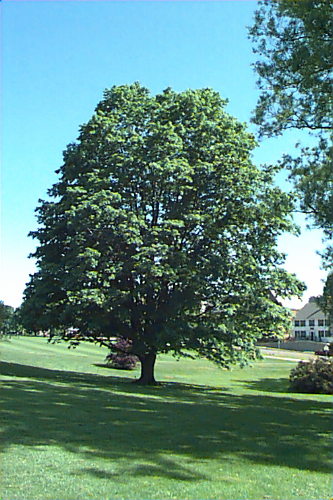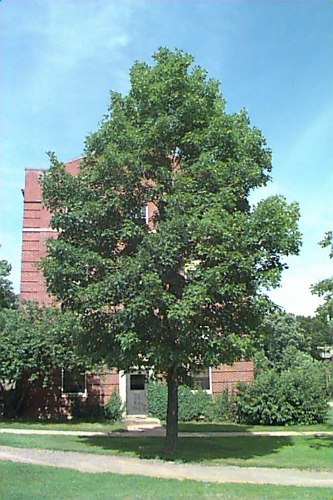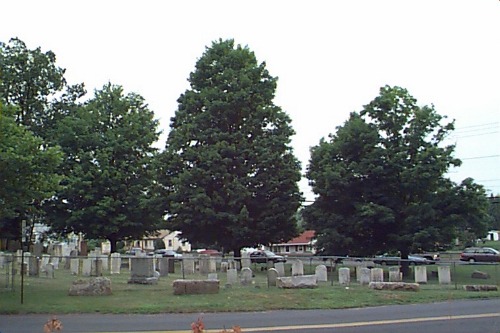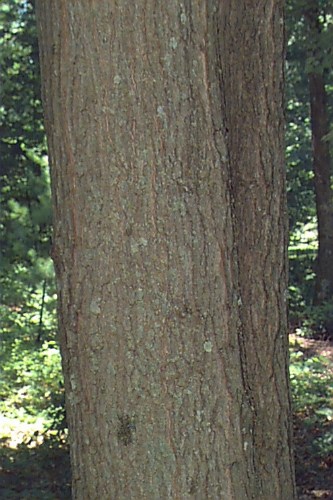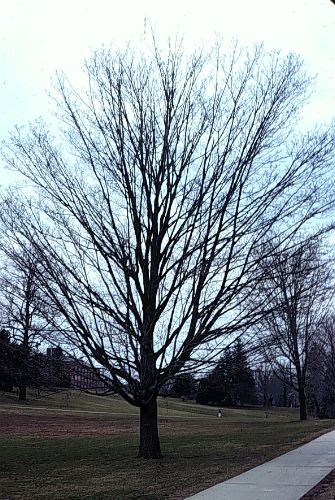Acer saccharum
Sugar Maple
Aceraceae
ExpandHabitat
- deciduous
- northeastern and north-central United States, adjacent parts of Canada
- zone 3
- primary large, hardwood tree in northeastern U.S. forest
Habit and Form
- large shade tree
- 75' or so, but can be well over 100' tall
- outline is upright oval when younger and more or less gumdrop-shaped to rounded when mature
- dense foliage and branching
- texture is medium
Summer Foliage
- opposite, 3" to 6" long
- 5-lobed, with the 2 basal lobes being smaller
- medium to dark green
Autumn Foliage
- excellent yellow, orange or red
- shaded leaves on plant interior are yellow, while exterior, exposed leaves turn orange with a red cast.
Flowers
- small yellowish green, before leaves in April
Fruit
- samaras, 1" to 1.75" inches long
- as a pair they form a horseshoe shape
Bark
- smooth gray-brown in youth
- develops thick, irregular, recurved plates with age
Culture
- does not perform well when root zone is restricted
- prefers well-drained, moist fertile soils
- not tolerant of high heat, pollution, road salt
- although shade tolerant, full sun is needed for proper landscape development
Landscape Uses
- one of the best large shade trees
- excellent in large yards, parks, gold courses, campuses
Liabilities
- creates dense shade which reduces turf vigor
- needs room to develop
- verticillium wilt
- leaf scorch due to drought
- intolerant of urban conditions of compacted soil, heat, drought, deicing salt
- branches are strong, rarely breaks in wind or under ice load
ID Features
- prominent, hard, pointed terminal bud; dark brown and gray, looks like an upside down sugar cone
- leaves not as wide as Acer platanoides
- sap from broken petiole is clear, not milky like Acer platanoides
Propagation
- by seed
- cultivars bud grafted
Cultivars/Varieties
Many fastigiate, narrowly upright forms have been selected. Among them are: 'Barrett Cole' (Apollo™), 'Newton Sentry', 'Steeple' and 'Adirzam' (Adirondak®).
Dwarf forms are known and occasionally offered by specialty nurseries. Most feature dense, rounded growth and compact mature heights of 15' to 25' tall. Notable are 'Globosum', 'Shawnee' and 'Natchez'.
'Bonfire' - Marketed for its purported brilliant red fall color, though some reports indicate a variable display. Mature form is oval, to 60' tall and wide.
'Green Mountain' (Green Mountain®) - Popular form with dark green summer foliage and variable fall color, may be red or orange. Usually displays an oval crown.
'Legacy' - Early reports indicate that this new variety displays good drought tolerance. Handsome thick, lustrous green leaves and good red/orange fall color. Mature form is upright oval, with good leaf density.
'Monumentale' (also known as 'Temple's Upright')- A novelty cultivar with extremely tight, upright narrow growth. One notable specimen at Boston's Arnold Arboretum is 50' tall and only 3' wide.
